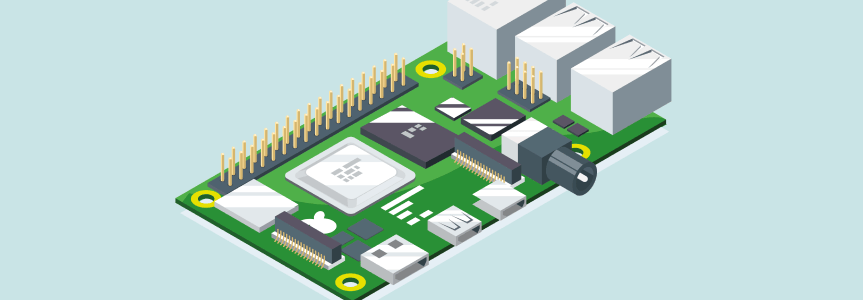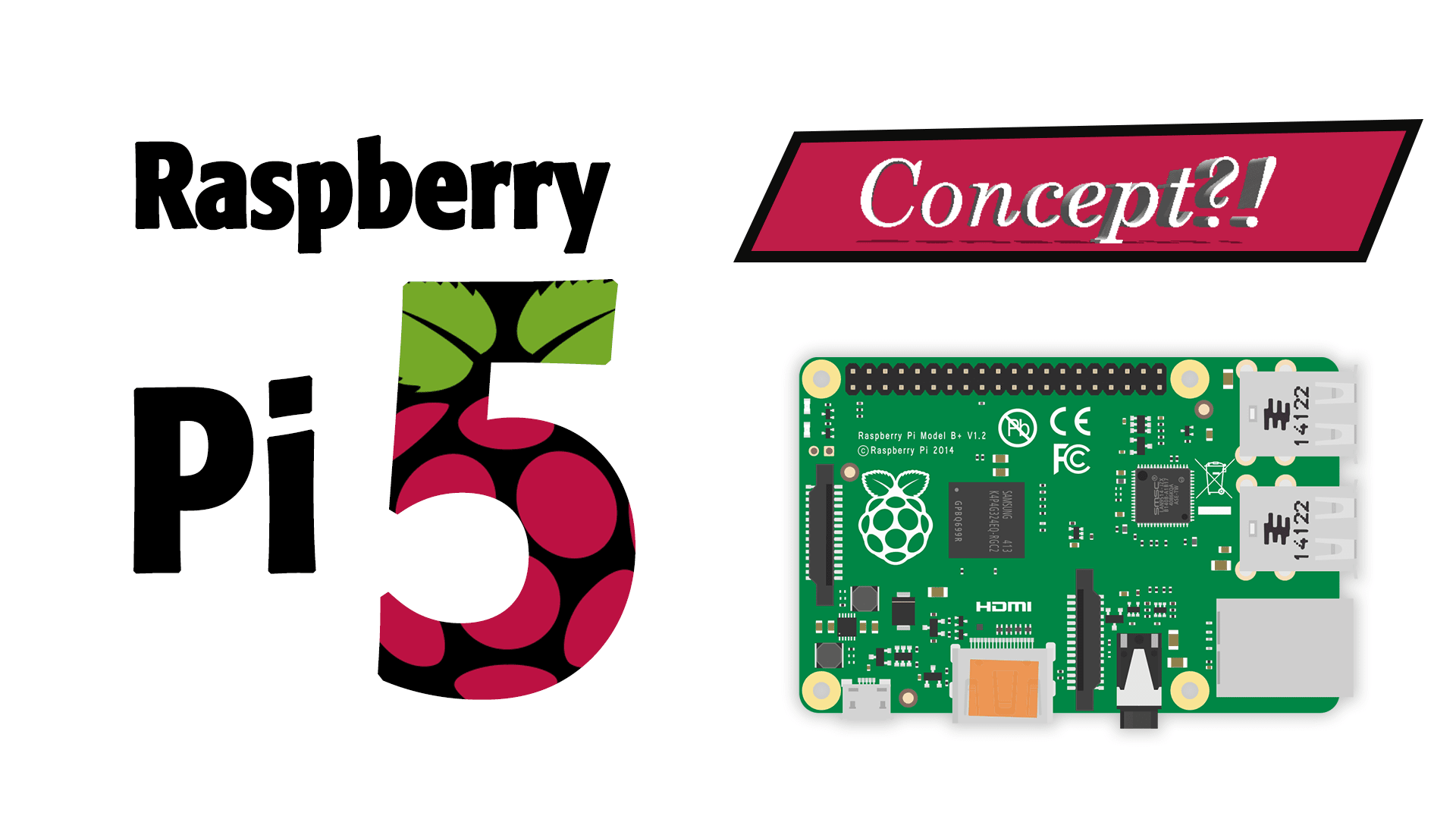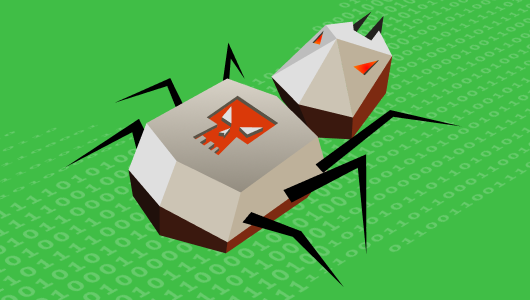Raspberry Pi 5: Expected release date and predicted specs

When will the new RPI 5 be available?
“Don’t expect a Pi 5 next year,” said Eben Upton, CEO of Raspberry Pi in a December 2022 interview, referring to 2023. “Next year is a recovery year” he continued, so it looks like second half of 2023 and into 2024, is “when we can start to think about what might be a sensible Raspberry Pi 5 platform.”
What’s the hold up?
The pandemic disrupted the global supply chain creating an unforeseen shortage in parts, while at the same time increased demand as more people were stuck at home with more free time to experiment with their projects.
An evolving market
Raspberry Pi, also known as RPI or RP, still holds its position in the industry as one of the top options for relatively inexpensive, general purpose single board computers. Since 2012, the Raspberry Pi Foundation has released four main generations of the single board computer; the latest one, Pi4B, was released in 2019 and will be the longest running Pi platform since its inception.
Raspberry Pis aren’t only used by hobbyists and makers, but also in the IoT industry, as they offer an unmatched solution for Linux edge computing. RPIs have become increasingly popular with growing commercial demand, and with so many performance improvements over the years, we’re all asking: What is the Raspberry Pi 5 going to be like?
In this article, we’ll review what we expect will be the core improvements included in the Raspberry Pi 5, and what these improvements might say about the evolving target customer for the Raspberry Pi Foundation.

Have a Raspberry Pi 3 or 4? It’s time to manage and access it remotely using JFrog Connect.
So, what is the RPI 5 going to be like?
To answer the question, let’s first discuss the key aspects of a general-purpose single board computer which are most sought-after.
1. Performance
Raspberry Pi has always been in partnership with Broadcom, trusting their line of SoC (System on a Chip) to be the heart of the Raspberry Pi lineup. The last member of the Broadcom SoC family to end up in a Raspberry Pi was the Broadcom BCM2711, Quad core Cortex-A72 (ARM v8) 64-bit SoC, which comes as the main processor of the Raspberry Pi 4B. It’s highly unlikely that Raspberry Pi will go with a different manufacturer for the new generation, so it’s safe to expect another beefed-up Broadcom SoC in the Raspberry Pi 5 – probably in the range of 2GHz base clock. There’s also a slight possibility that Raspberry Pi may develop its own SoC, although chances of having one as early as in a Raspberry Pi 5 is unlikely.
In terms of RAM, we’d like to see one of the Raspberry Pi 5 versions getting as much as 16GB of LPDDR5 RAM, which isn’t only power efficient, but also faster than its predecessor LPDDR4 SDRAM.
2. Cooling
We all know that Raspberry Pis can get quite hot when they run on full power. With the reduced size and more processing power crammed in, we can expect the Pi5 to get even hotter than the current generations. An additional cooling system (i.e. copper pipes, or a larger area for mounting heat sinks) would be ideal to increase the lifespan of the computer while increasing its performance.
3. Storage
So far, all of the Raspberry Pi development boards (except for the compute modules) have been equipped with MicroSD or SDHC card slots. In the production run, this makes the BOM cost lower but makes the user go through the hassle of swapping SD cards between computers and the Pi, and flashing bot images, etc. Of course, this type of setup has its own advantages, such as easy backup and restoration. That said, it would be nice to see a Pi5 with a built-in eMMC storage with some form of BIOS configuration that will allow the Pi to be booted from a USB flash drive. Not only will adding eMMC storage provide faster IO, but the data will be less prone to damage and theft as well.
4. Ports
There isn’t much more that can be included in such a small form factor, but we believe there should be one thing that must make a comeback in the next Raspberry Pi; the full-size HDMI port(s). It’s been a nightmare to connect all those micro-HDMI ports and convert them into full-size HDMI with adapters that need to be purchased separately. The GPIO header is expected to be of the same setup to maintain backward-compatibility. If an eMMC storage is used, it’ll be nice to have another USB-C port to access the eMMC as a USB-mass storage device, which maintains the existing flexibility of flashing and extracting boot images from the device while keeping the speed and reliability of the eMMC storage.
5. Connectivity
Other than the default Gigabit Ethernet, USB2.0, and USB3.0 ports, the Raspberry Pi 5 is likely to receive an upgrade to Bluetooth v5.2 for faster speeds and increased communication range. For added range, SMA connector options for attaching external antennas for WiFi and Bluetooth may also come in handy for production device integration.
6. Display Outputs
As mentioned before, the comeback of a full-size HDMI port is highly anticipated, along with some improvements to the display output system, such as 4k60fps when running dual-displays. The current version only supports 4k30fps when in dual display mode and 4k60fps in single display setup. This is expected to change in the Raspberry Pi 5.
What does the community want the RPI 5 to be like?
Obviously, FEWER BUGS!

As obvious as it may sound, the Pi 5 is expected to address the problems that the current versions have, such as:
Problem 1: USB-C power issue
There are many USB-C power adapters that come with fast charging technologies such as QuickCharge, DashCharge, or SuperCharge. A hardware design flaw in the Raspberry Pi 4/4B has been known to cause some adapters to mis-interpret the device type and provide more than 5V for powering it, inadvertently frying the board’s power supply, or worse, the whole SoC. There have also been some cases where adapters have refused to power the Pi at all. Maya Posch explains the cause for this in-depth in her article in Hackaday. We have high hopes that the Pi 5 won’t have the same design flaws.
Problem 2: USB hub and Ethernet chip heating up
There have been reports of instances where the Via Labs VL805 4 port USB hub and the LAN9512 Gigabit Ethernet controller on the Pi4/4B are getting hot, even when there are no devices plugged in. Only some users have experienced this and no specific reason has been found. We expect the Pi 5 to be free from this mishap since increased idle temperature means decreased lifespan of the components.
Problem 3: Low Voltage warning
There’s been a mysterious pop-up in the desktop asking users to check the power supply, even when the power supply appears to be more than sufficient for the Pi. In the Raspberry Pi 5, we’d like to see it triggered only when the Pi is really struggling to draw enough current from the power supply.
A twist of Raspberry Pi Pico in the Raspberry Pi 5?
Not so long ago, Raspberry Pi introduced their very own microcontroller, the Raspberry Pi Pico, which came with a boatload of features such as the Programmable IO state machine subsystem. Being a microprocessor-based system, Raspberry Pis aren’t designed for efficiently executing time-critical tasks such as PWM signal generation, DAC, and ADC functions — not to mention interrupt handling. That’s why we’d like to see some of the most sought-after features from the Pico integrated into the Raspberry Pi 5 development board, such as:
- Analog Inputs (ADC)
- Hardware PWM outputs
- Programmable IO state machine system
- Additional hardware UART interfaces
- Accelerated on-chip floating point and integer libraries
- Hardware interrupts
It would also be ideal to have one or two essential features such as an RTC and low power modes backed by the microcontroller portion of the system.
An afterthought…
We know all this is quite a bit to ask for. But some of the features discussed in this article are essential to save troubleshooting time so users can focus more on developing their IoT systems.
So although the Raspberry Pi 5 may not be perfect, we expect the design engineers to include at least some, if not all of these improvements in their next release, the Raspberry Pi 5.
Alternative Single-Board Computers?
There are many alternative single board computers to Raspberry Pi including Odroid , Rock Pi , Banana Pi and Orange Pi. But of course, how well each of these will meet your needs depends on your requirements. One commonality they share is that they can all run Linux. And regardless of the hardware, if Linux is your OS of choice, then you can update and manage your IoT devices with JFrog Connect.
Do you need to manage your Linux-based IoT devices remotely?
Here’s how to access (SSH, VNC), update, monitor, and control your Linux device remotely with JFrog Connect:

We know how important it is to manage your deployments based on Raspberry Pi, such as performing remote updates establishing remote connections such as SSH and remote desktop connections. That’s why JFrog Connect specializes in managing any Linux device remotely and efficiently update, control, and monitor IoT devices from anywhere in the world with just a few clicks.
To learn more, visit jfrog.com/connect/ and sign up for the free trial.



